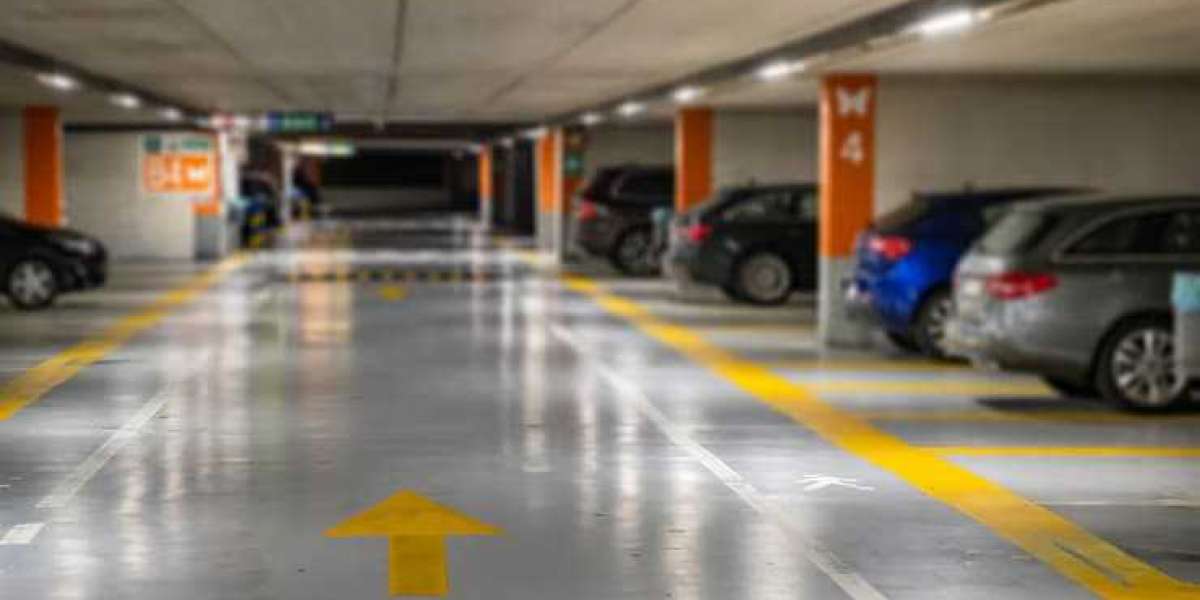In today’s urban landscape, the demand for efficient and effective car park design is greater than ever. As cities grow and the number of vehicles increases, the need to optimize the use of available space while ensuring smooth traffic flow becomes paramount. A well-designed car park not only maximizes space but also enhances the user experience, reducing congestion and making navigation easier for drivers. This article delves into the various strategies and principles that govern effective car park design, focusing on how to balance space utilization and traffic flow.
Understanding the Fundamentals of Car Park Design
At the heart of successful car park design lies a thorough understanding of the space constraints and the flow of vehicle movement. The primary goal is to create an environment that facilitates easy access and egress for vehicles while minimizing delays and confusion. To achieve this, designers must consider several critical factors, including the layout, entry and exit points, circulation patterns, and the overall capacity of the facility.
The layout of a car park significantly influences its efficiency. Traditional designs often incorporate straight rows of parking spaces, which can lead to bottlenecks during peak usage times. However, modern car park designs are increasingly embracing more innovative layouts, such as angled parking, which can facilitate smoother traffic flow. By positioning parking spaces at a 45-degree angle to the driving lanes, drivers can enter and exit spaces with greater ease, reducing the time spent searching for open spots and enhancing overall circulation within the facility.
Moreover, the configuration of entry and exit points plays a crucial role in the success of car park design. Multiple access points can alleviate congestion by distributing traffic more evenly across the facility, allowing vehicles to enter and exit without significant delays. Furthermore, incorporating clear signage and wayfinding elements helps guide drivers through the space, making it easier to locate available parking spots and navigate back to their vehicles.
Optimizing Space Utilization in Car Parks
Effective space utilization is one of the cornerstones of car park design. Designers must maximize the number of parking spaces without compromising the overall user experience. One innovative approach is the use of multi-storey car parks, which allow for vertical expansion rather than horizontal sprawl. By building upwards, designers can accommodate more vehicles on a smaller footprint, making it an ideal solution for urban areas where land is at a premium.
In addition to vertical expansion, the implementation of smart parking technologies can further enhance space utilization. These systems use sensors to monitor parking occupancy in real-time and provide drivers with information about available spots, reducing the time spent searching for parking. Some advanced systems even allow for automated parking, where vehicles are parked by robotic systems, optimizing the available space and eliminating the need for wide driving lanes.
Moreover, the design of parking spaces themselves plays a significant role in optimizing space. Standard parking spaces are typically around 2.5 meters wide, but in some cases, reducing the width to 2.4 meters can create additional capacity without significantly impacting the user experience. Additionally, incorporating compact parking spaces for smaller vehicles can further enhance space efficiency, allowing for a greater number of vehicles to be accommodated within the same area.
Enhancing Traffic Flow and User Experience
While maximizing space is crucial, ensuring smooth traffic flow is equally important in car park design. A seamless flow of vehicles minimizes congestion and enhances the overall user experience. This can be achieved through careful planning of circulation patterns and the use of features that facilitate easy movement within the facility.
One effective strategy is the implementation of one-way traffic systems. By allowing vehicles to flow in a single direction, designers can reduce the likelihood of conflicts between incoming and outgoing traffic, leading to a more efficient operation. Additionally, one-way systems can simplify navigation, making it easier for drivers to find available parking spaces without the need to navigate complex intersections.
Incorporating designated pedestrian pathways within the car park is another essential aspect of enhancing traffic flow. These pathways not only improve safety by separating pedestrians from vehicles but also guide foot traffic towards key destinations, such as building entrances or shopping areas. This thoughtful design element contributes to a more pleasant experience for all users and encourages higher footfall in adjacent businesses.
Furthermore, the use of landscaping and natural elements can create a more inviting atmosphere within the car park. Trees, planters, and green spaces not only enhance the visual appeal of the facility but also contribute to better air quality and reduced heat retention. A pleasant environment can make the car park a more attractive place for users, ultimately leading to increased patronage and satisfaction.
Sustainability in Car Park Design
As environmental concerns grow, integrating sustainability into car park design has become increasingly important. Incorporating eco-friendly practices can enhance the reputation of the facility while also providing long-term cost savings. Designers can incorporate features such as permeable paving, which allows rainwater to infiltrate the ground rather than creating runoff, reducing the risk of flooding and promoting groundwater recharge.
Moreover, the integration of electric vehicle (EV) charging stations is becoming a standard practice in modern car park design. With the rise of electric vehicles, providing charging infrastructure not only meets the needs of eco-conscious consumers but also positions the facility as a forward-thinking choice. Additionally, incorporating solar panels on the roof of multi-storey car parks can provide renewable energy to power lighting and other systems, further enhancing the sustainability of the design.
Another innovative approach is the use of green roofs. These living roofs provide insulation, reduce stormwater runoff, and can even be transformed into recreational spaces for users. Such features not only contribute to environmental sustainability but also improve the overall aesthetic appeal of the car park, creating a more pleasant environment for visitors.
Conclusion
In conclusion, effective car park design is a multifaceted challenge that requires a careful balance between maximizing space and ensuring smooth traffic flow. By embracing innovative layouts, smart technologies, and sustainable practices, designers can create car parks that not only meet the demands of modern urban life but also enhance the user experience. The integration of these principles can lead to car parks that are efficient, attractive, and environmentally friendly.
For those looking to elevate their car park design projects, Onn Point Civil Engineering offers expert insights and solutions tailored to meet your needs. With a commitment to excellence and innovation, they are ready to help you create a car park that stands out. Contact them today to discover how you can maximize space and flow in your next car park design project!







